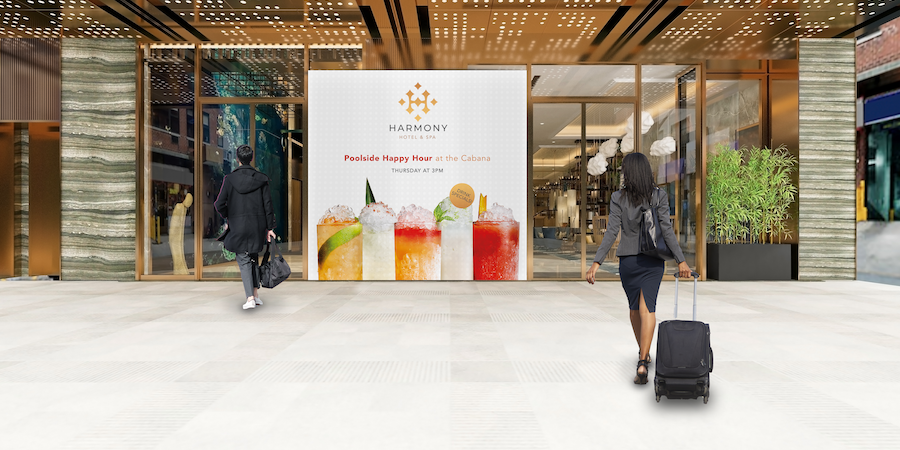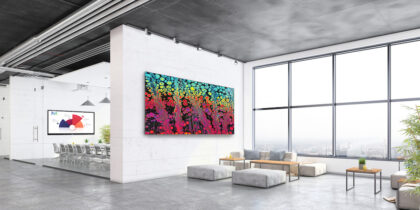Making a technology investment is sensible if it will improve even one aspect of your business. The benefits of LED signage, however, are multiple — such as enhanced display performance, reduced overhead and improved sustainability.
No matter where or how you want to get your message across, LED signage does the job in style. Equally appropriate indoors and outdoors, LED screens can deliver next-level performance along with significant energy savings — which makes it a sustainable signage solution. LED is more affordable than you might imagine, and with Samsung’s new trade-in, buy-back and cash rebate offers, it’s more affordable still.
How does LED signage work?
A single LED, a light-emitting diode, functions as a single pixel in a digital sign. Arrange enough LEDs on a circuit board — of virtually any shape or size — and you have the basis of an LED screen. By combining red, green and blue elements, each LED can display literally millions of colors. Each LEDs can also be controlled individually, so you can switch them on or off instantaneously to create complex shapes, patterns and color combinations.

There’s virtually no limit to how large your LED screen can be, and very few restrictions on its shape. You can put the technology to work in almost any environment to be viewed from any distance. With relatively large gaps between pixels (a higher pixel pitch), the display will be legible from a distance, while shrinking these gaps (for a lower pixel pitch) produces sharper visuals when the screen is viewed up close.
How does LED signage improve efficiency?
At every turn, LED signage offers energy efficiency and sustainability improvements, with equally compelling knock-on effects.
Compared to old-fashioned halogen, incandescent or fluorescent alternatives, LED consumes between 50 and 70 percent less electricity, resulting in immediate cost savings.
LEDs are directional, meaning they emit light in just one direction rather than in an aura. So a low-watt LED appears just as bright as a larger traditional bulb, without wasting energy.
Older display technologies such as projectors actually generate more heat than they do light, but LEDs produce very little heat — so little heat that it’s, relatively speaking, negligible. LED screens are cool to the touch, which makes them safer, far more energy-efficient and much less likely to burn out.
How often will LED signage need replacing?
LED displays have a much longer lifespan than other types of digital displays. A typical LED should be good for 50,000 to 100,000 hours — and some will last considerably longer. That’s at least twice the lifespan of a fluorescent bulb, and up to 40 times the lifespan of an incandescent bulb. This holds true even if your business needs your LED screen to be running 24/7.
Impressive energy efficiency is complemented by little need for maintenance, which means cost savings, less workflow disruption and minimized environmental impact.
How to plan and deploy direct view LED signage
Everything you need to know about choosing your LED displays for optimal viewing indoors and out. Download Now
Upgrade from LCD to Samsung LED signage
If your business is still using old-school LCDs, a signage upgrade is now easier than ever with Samsung’s LED buy-back program.
Trade in your existing LCD — from any brand, whether it’s working or not — and save 30 percent on a new LED bundle kit. Samsung will remove the installed display and, if it’s still working, refurbish and resell it, also assessing the residual value, which you’ll receive as a cash rebate. If your existing display is not working, Samsung will identify any useable parts and transport them to the commodities market. By recycling the materials, you help reduce waste and give new life to your outdated technology.
When it comes to getting your business seen and making your brand widely understood, LED screens are the way forward. High impact, energy efficient and low maintenance, LED is a win-win-win for virtually any application.
Not sure what kind of LED display to go for? Explore the full range of innovative Samsung LED displays — designed for versatile use in any space. And find out how you can configure and tailor your display’s messaging in real time using an integrated CMS in this free guide.








